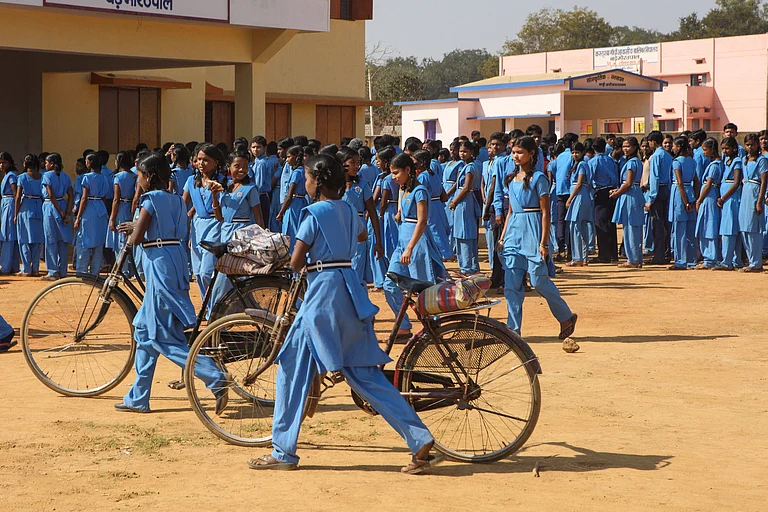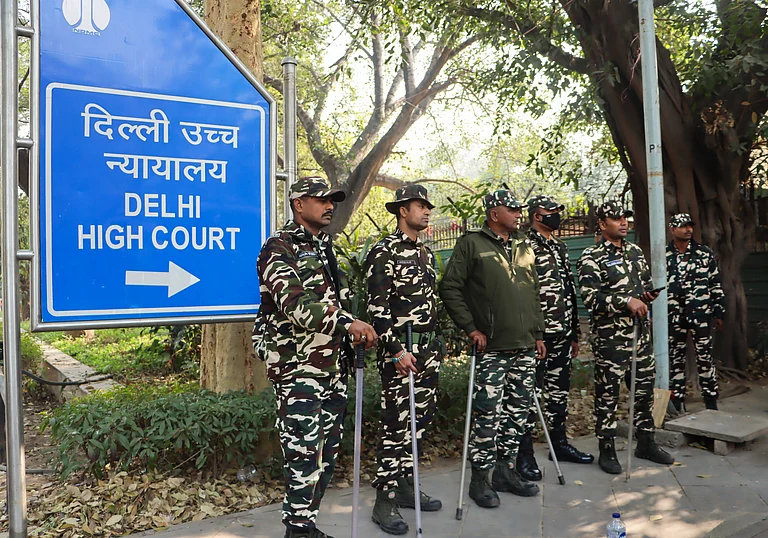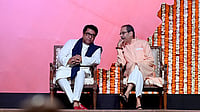Any disruption in the marketplace requires a high-voltage jolt. In most cases, technology automatically shakes up a complacent industry. But in a few ones, the government and industry need to work together, and in a pro-active manner to effect changes that are crucial, beneficial, practical, and useful. The case for electric two-wheeler falls in the latter category. For example, we know that we need to move away from the fossil-fuel economy, i.e. reduce oil consumption. We need to take steps to radically curtail air pollution.
More importantly, we need to look at business, not just as a profit centre, but also as a sustainable model. Seen from this context, there is a huge case in favour of a shift from internal combustion technology to electric one, especially in two-wheelers, which is a huge market. But here are some bleak facts about electric two-wheelers. Only 70,000-80,000 vehicles are sold annually in the country, compared to 1.44 million petrol ones in 2018-19. In fact, the electric vehicle (EV) makers feel that this year will be worse than the previous one.
One of the most important drags on growth in the segment relates to government policies. “Any impetus to encourage the use of EV has to come from the government. It has to nurture electric for a specified period,” feels Naveen Munjal, MD, Hero Electric. Adds Sohinder Singh Gill, CEO, Hero Electric, “We need policy interventions, along with industry optimism, to cross the volume-chasm.” The growth in EV demand in most nations was driven by the governments, either in the form of a ban on internal combustion two-wheelers (China), or incentives and sops (England and Nordic nations).
But, in India, despite the noble intentions, policies have hampered demand. In a bid to push the ‘Make in India’ campaign, the previous regime asked the EV makers to have localisation level of 50%. This was tough because of the low volumes. Tier-1 vendors or suppliers are excited only when sales reach a critical mass. Since, this hasn’t happened in EV, there is a dearth of quality component-makers. Localisation has pushed up costs, which has further widened the price gap between EVs (which are more expensive) and petrol vehicles.
Although the government subsidy on high-speed EV, from Rs 10,000 to Rs 22,000, the policy makers specified the speed (40 km) and range (80 km) on the products. Munjal questions this, and contends that these issues need to be decided by the manufacturers and buyers, and not through policies. “There may be consumers, who may intentionally wish to forego speed for safety. Anyway, the average speed on city roads is 25 km/h for a two-wheeler. So, what’s the need for the government to fix these?” he asks.
Another bone of contention is the non-availability of loans to buy EVs. While 65% of petrol two-wheelers are financed, the figure is less than 3% for the electric ones. The interest rates are high, and the banks are cagey to process loan applications. One of the reasons can be because of low resale value, and the lack of a second-hand market. The fact remains that the segment needs to reach a critical mass. As Gill puts it, “We need to put two million EVs on the road to increase visibility. We need to cross a certain sales-threshold level.”

Visibility is the key. Two million two-wheeler EVs need to be on the roads
The only way to achieve this objective is to initiate steps to reduce the high price of the electric vehicle, and bring it at par with the internal combustion one. There has to be a well-planned, well-coordinated strategy worked out between the industry and government. It has to include a combination of subsidies, awareness, education, and a push factor. For instance, there are businesses that depend on mobility – e-retailers, food chains, couriers, and others. These chains don’t own the two-wheelers, but encourage driver-consolidation.
Such outsourced drivers, obviously, buy the cheapest and, hence, the oldest vehicles to cut down costs. At present, it is estimated that such businesses use about two million vehicles. Gill questions, “Why should these businesses pollute?” Adds Munjal, “Why can’t they be urged to shift to non-polluting vehicles in a phased manner, say, 10-20% every year?” As online sales go up in the near future, and online retail becomes the norm, the number of such vehicles will only go up. This is an opportune time for the government to step in.
In the long run, everyone agrees that despite the initial higher price, the operating expenses favour the EVs. A petrol two-wheeler runs 50 km on a litre of petrol, which costs an average of Rs 80. An electric vehicle requires 1-1.5 units of power, or almost one-seventh the costs. There is zero maintenance, apart from the expenses on tubes, tyres, and brakes. This is because an EV doesn’t have rubbing parts, but only rolling ones, which lead to lower wear-and-tear. There is a three-year unconditional warranty on battery, which lasts for five years. However, battery replacement is expensive (Rs 50,000).
Hero Electric, a pioneer in EV that started production in 2007, has initiated several other moves to make it easier for buyers to run and maintain their vehicles. It has trained 10,000 roadside mechanics to handle EVs. It has evolved a battery-swapping mechanism. Large e-fleets are offered lucrative leasing and renting options for batteries. Events are held to educate customers. The company also provides service at your doorsteps. With a capacity to make 75,000 bikes a year, it is now in a leadership position.
At present, the existing owners of EVs seem to prefer them. When Hero Electric gave the vehicles to customers for test rides, the latter refused to return them. They maintained that they had stopped using their petrol vehicles because of the benefits of the electric one. In addition, the younger generation, including children, loves these bikes because they are silent. Munjal contends that 45% of the company’s sales are either repeats or through referrals. The only thing to be done now is to woo new customers, millions of them – and soon.
***

Naveen Munjal, MD, Hero Electric
‘Policies Pushed Our Targets Back By 5-6 Years’
The fact is that we have to reduce our dependency on oil. Petrol-driven two-wheelers, which comprise 75% of motorised vehicles in the country, add to the pollution. Around Diwali, there is a huge hue and cry about the dangerous levels of air pollution. We have to find another way to do business. Any change, from internal combustion to electric, will be difficult. Even in the US, the Tesla electric car is a premium product, and comes with a high price tag. A mass mobility product has to be cheap to gain larger volumes. Indians make a distinction between capital expenditure, i.e. initial costs, and operating expenditure. The infrastructure required for electric vehicles hasn’t happened in India.
With the recent policy changes in the past, we have gone back a few years. We have asked for changes. We want a higher subsidy of Rs 30,000 per vehicle, against the existing Rs 22,000. If the government does not wish to exceed its subsidy budget, which is Rs 10,000 crore, it can be front-loaded. It can be spent in a shorter period, like two years, rather than over a longer one. This will encourage sales at a faster pace. Once the customers accept the product, the government can phase out the subsidy. But, within those two years, there will be enough momentum to sustain demand in the future.
Why should the policy makers be involved in some of the issues that should only concern the manufacturers and buyers, like the speed and range of the e-bikes, or the use of a certain kind of battery. This should be left to the manufacturers, and buyers. The government insists on 2.5 KWh batteries, which cost Rs 50,000 each. This pushes up the e-bike’s cost to Rs 100,000. A volumes market for that price does not even exist in the internal combustion two-wheeler segment in the country. How can we expect to increase demand in the electric vehicle segment? Normally, in June and July, volumes pick up. But with these policy changes, we will witness a decline in sales. Our sales target is now pushed back by 5-6 years because of these recent policy changes.
***

Sohinder Singh Gill, CEO, Hero Electric
‘We May Be Too Late Now’
We have to cross a specific sales-threshold level. Until then the volumes will be thin. We need to break the clutter. In case of electric mobility, we are running a three-legged race. We need policy interventions and industry optimism to cross the chasm. The solutions are fairly simple.
First, we need to show visibility. We have to put two million EV bikes on the roads. We have to prove that these are good quality vehicles, which provide value for money to the customers. We can either create or destroy this segment. It has been five years, and we still don’t have a million vehicles on the road.

We need to have a mix of incentives and disincentives for the purpose. An industry-policy mandate can create visibility. The question is: where is the money? If there is a will, the budget can come from the existing two-wheeler buyers. For example, the government can impose a green cess of Rs 500, which wouldn’t even be noticed by the customers. From 20 million two-wheeler owners, this can yield Rs 1,000 crore a year.
This can form the kitty to encourage the use of EVs. The government can use Rs 500 crore to create awareness and education among potential buyers. Green mobility can be linked to other cleanliness schemes like Swachh Bharat. We can then crate an environment for a parity between internal combustion vehicles and electric ones. Both the industry and government have to pitch in. Then the supply chain will automatically crop up. In fact, vendors will queue up to sell components to EV manufacturers. We have to decide whether we wish to have volumes first, or localisation first.


























